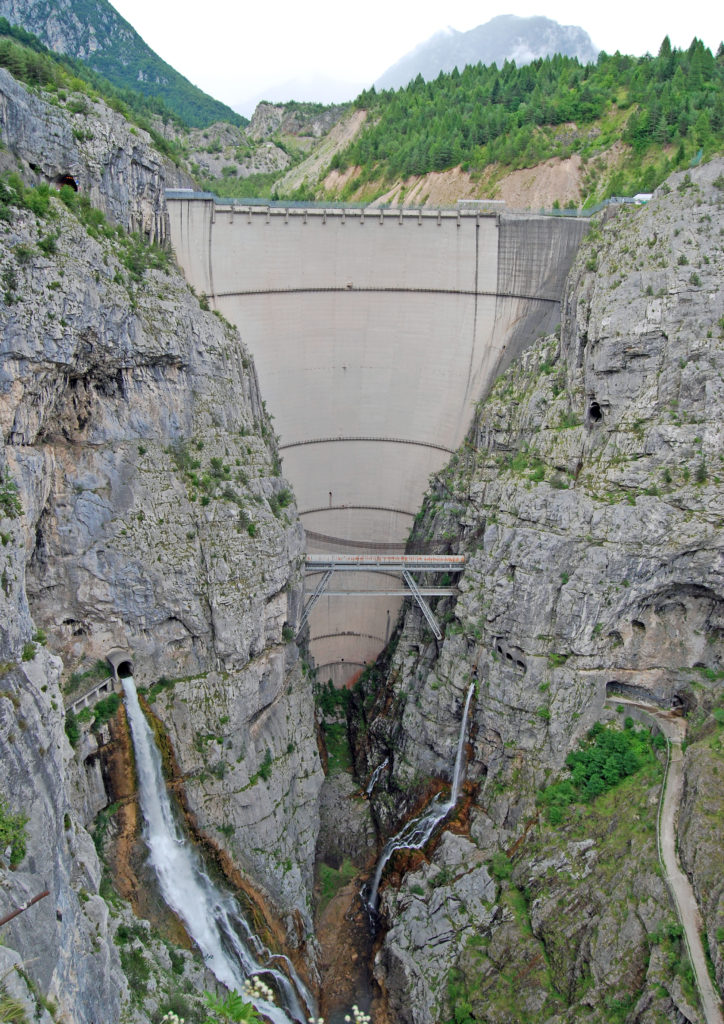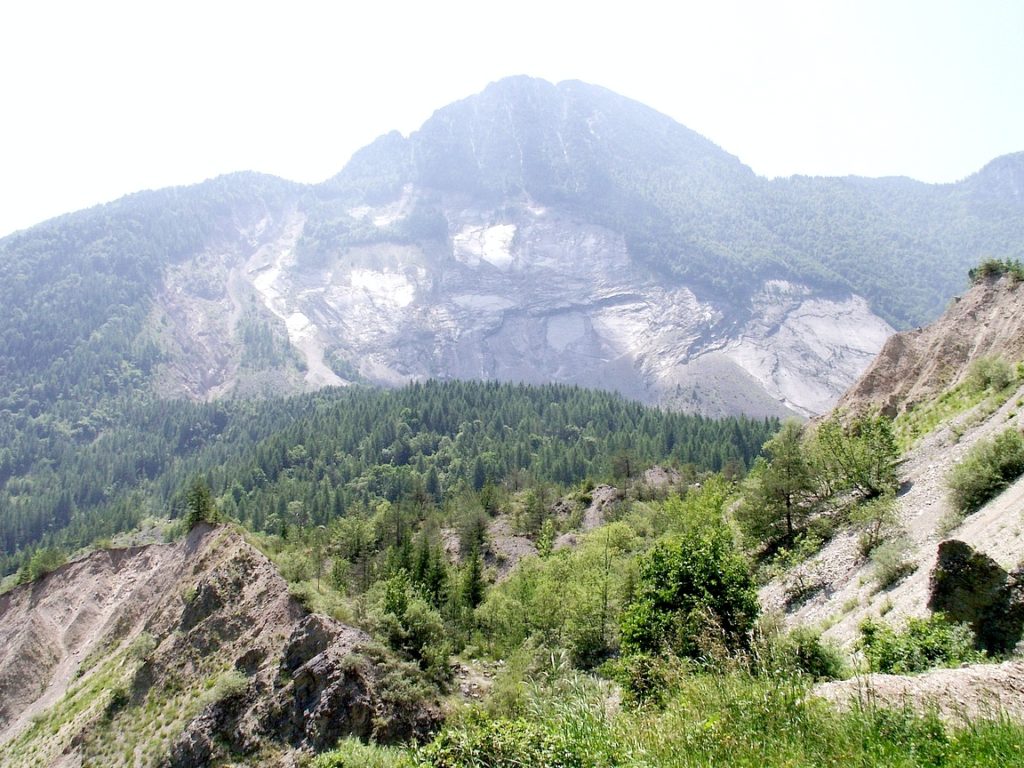It was the perfect place to build a dam. The Italian Alps had formed a deep, steep-sided valley that could provide the site for a tall, narrow dam capable of providing enormous amounts of hydro-electricity. So, the Italians built it—the Vajont Dam, highest arched dam in the world at the time. The tragic flaw would not surface until later.
The Vajont Valley is in northeastern Italy, about 60 miles north of Venice. Mount Toc, a 4,800-foot peak, forms the southern boundary of the valley, dominating the landscape. The dam is 860 feet tall, a thin arched structure, much like Hoover Dam in shape. The dam went up between 1957 and 1960, when the gates were closed and the reservoir behind the dam began filling.

That’s when the trouble began. As the dam filled, the slope of Mount Toc began to slide downhill. Engineers had expected some movement, knowing that landslides were common in the Alps and that the side of Mount Toc might be somewhat unstable. Their strategy was to fill the lake slowly, alternately raising and lowering the water level, creating small controlled land movements that would eventually stop. The strategy worked for a time, as engineers monitored the “creep” of the mountain and made changes in water level to slow it down if the movement was too fast.
A little problem occurred in November, 1960, when 700,000 cubic meters of the mountain slid into the reservoir—in ten minutes. The dam held and the lake absorbed the landslide without incident. The large rock-pile in the middle of the reservoir was a cause for concern, however, because engineers worried that a bigger landslide might block water from reaching the dam and so stop the ability of the dam to generate electricity. In response, they designed and built a tunnel between the upper part of the reservoir and the dam, so that a potential blockage could be by-passed.

Then came the big problem. The summer and fall of 1963 were wet, the unusually high rainfall raising the lake’s water level higher and faster than desired. As the lake behind the dam reached a depth of about 800 feet, Mount Toc started slipping more. Some observers got nervous, but the general feeling was that the mountain would hold. Then, at 11:39 PM on October 9, the entire side of Mount Toc fell into the reservoir. An area 1.5 miles by 1 mile containing about 250 million cubic meters of rock (400 times bigger than the earlier landslide) fell into the reservoir in 45 seconds. The landslide completely filled the valley, to a height well above the top of the dam.
The water in the reservoir had to go somewhere. An 850-foot tall wall of water pushed up the opposite side of the valley from the landslide, destroying one small town on the hill. Another wall of water was pushed upstream, flooding several more villages. The landslide pushed all the water between the slide and the dam into a huge wave that towered 700 feet above the dam. It fell on five downstream towns, the weight of the water destroying everything in its path. A flood wave traveled downstream, still more than 200 feet high when it hit the mouth of the Vajont River one mile below the dam. In all, 2059 people are known to have died, crushed by the falling water or drowned in the accompanying floods. In one downstream village, 94% of the residents died.
The geology of the region was much more complex than thought when the dam was designed and built. Rather than solid rock, the slope of Mount Toc was relatively unstable, composed of rubble ancient landslides. Underlying the rubble was a thin layer of clay that acted as a gigantic slip-n-slide for the mountain. High rains and the rising water in the reservoir helped to waterlog the clay layer, which eventually gave way all at once. And, as you might expect, post-mortems revealed that the early tests of the geology were too few, insufficiently detailed and their cautions largely ignored.
Dams are the largest and most intrusive human-made structures on the planet. They provide enormous benefits—water for direct human use and irrigation, renewable electricity, efficient transportation, flood protection—but they are also dangerous. As an old adage states that in time the river washes away the dam. And, indeed, most dam tragedies are caused by the washing-away of the dam as water goes over the top of the dam and erodes it from downstream.
But not in this case. In a tribute to Italian engineering, the dam withstood the disaster on October 9, with only slight damage to the top of the structure. The dam still stands, and it still generates electricity—water in the reservoir upstream of the landslide is routed through the by-pass tunnel, which also wasn’t damaged, to the turbines located in the dam.
References:
Bressean, David. 2017. Expecting A Disaster: The 1963 Landslide of the Vajont Dam. Forbes, Oct 9, 2017. Available at: https://www.forbes.com/sites/davidbressan/2017/10/09/expecting-a-disaster-the-1963-landslide-of-the-vajont-dam/#2d53844011f8. Accessed October 1, 2019.
Mauney, Lee. Case Study: Vajont Dam (Italy, 1963). Association of State Dam Safety Officials. Available at: https://damfailures.org/case-study/vajont-dam-italy-1963/. Accessed October 1, 2019
Petley, Dave. 2008. The Vaiont (Vajont) landslide of 1963. American Geophysical Union, AGU100, 11 December 2008. Available at: https://blogs.agu.org/landslideblog/2008/12/11/the-vaiont-vajont-landslide-of-1963/. Accessed October 1, 2019.
